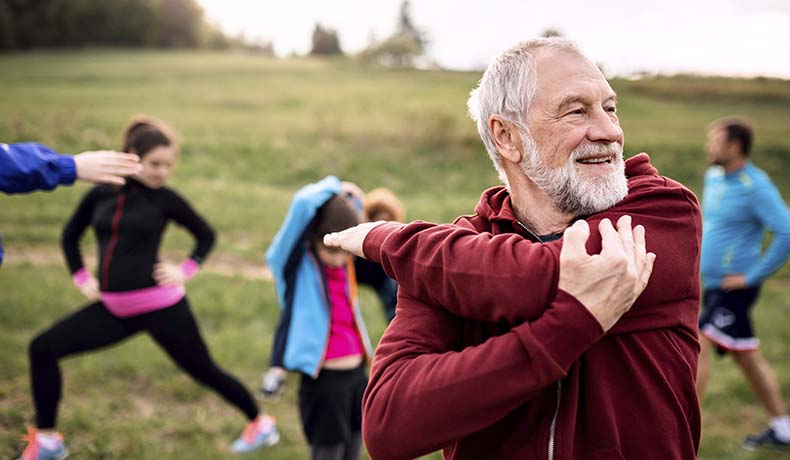
Strength Training for Seniors: A Vital Ingredient for Aging Gracefully
As we steadily make our way deeper into the 21st century, more and more studies are carried out and made available to us that answer one of our biggest questions:
How can we age stronger, healthier, and more gracefully than our predecessors?
Thankfully, the answers to this question are so clear, that at present, the average longevity of humans today is the best it’s ever been. Modern medicine, more thorough research into healthy nutrition, and better access to healthcare facilities all play a large part in this spike of longer life expectancy.
However, one area that tends to be neglected when discussing the tools for aging gracefully is the importance of resistance training. We all know that exercise in general is good for us, but specifically, resistance training can play a critical role in senior health. Particularly for individuals aged 65 and above.
Resistance training, also known as strength or weight training, has been around for millenia. Early studies date it back to the ancient Greeks in their bids to conquer fellow warriors on the battleground, or fellow athletes in the ancient Olympic games.
With rising popularity in the 1960s and 70s, resistance training became progressively more common for everyday folk to enjoy; no longer strictly limited to those either preparing for combat or competition.
Here, we’re going to deep dive into some of the most significant positive effects of resistance training, and why anyone looking to age gracefully should consider including it as a regular part of their lifestyle.
Increased Muscle Mass and Strength: As we age, our bodies naturally begin to lose muscle mass. This process is known as sarcopenia. A decline in hormones as well as reducing numbers of neuromuscular junctions are two of the possible causes of sarcopenia.
However, strength training has been shown to combat this with an increase in both muscle mass and strength. Consequently allowing seniors to maintain and manage daily tasks more efficiently, while reducing their overall risk of falls.
Improved Bone Health: With an increase in both muscle mass and strength through resistance training, studies have proven that resistance training also increases overall bone density. By applying light and controlled force to the bones through exercise, the body responds naturally by fortifying the bone structure. Thus, minimizing the risks of fractures and conditions such as osteoporosis.
If you’re currently affected by osteoporosis, take a look at our Preventing and Dealing with Osteoporosis, Like a Boss article here.
Boosted Metabolic Rate: The consequences of a higher muscle-mass percentage result in an increased overall metabolic rate. Simply having more muscle on your body requires more calories (through diet) to maintain it, which largely helps with weight management while combating obesity. This further results in a reduction of chronic disease risk such as heart disease, diabetes, and certain types of cancers.
Improved Balance and Stability: Resistance training doesn’t only increase and improve the visible muscles in your body, but it also strengthens those deeper stabilization muscles, as well as your body’s tendons and ligaments. This leads to both better balance and stability which is crucial in reducing the risk of falls. With over 800,000 older patients hospitalized each year because of a fall injury, it’s definitely an area to highlight.
But fall prevention doesn’t stop at improved balance and stability, check out our Fall Prevention article right here to learn more about reducing your risk of unnecessary slips, trips, and falls.
Of course, the points mentioned above are only a few of the many benefits linked to resistance training in your senior years. Other benefits include improved sleep, a boost in self-esteem, and even enhanced cognitive function. Due to the endorphins released during and after resistance training; anxiety, depression and mood swings can be kept much further at bay.
Attached is a simple, yet effective three-day resistance training plan to help get you started on the right path. Keep in mind that it’s paramount to first discuss beginning a new training plan with your healthcare provider. Start slow, focusing mostly on form and balance, before gradually building up to more challenging routines. Always listen to your body and aim to complement a resistance training plan with a balanced healthy diet and adequate sleep.
The journey to a stronger, fitter, healthier you begins here!
